Technology -
Semiconductors - NYSE - TW
$ 174.54
-2.34 %
$ 905 B
Market Cap
22.14
P/E
1. INTRINSIC VALUE
Balance Sheet
Taiwan Semiconductor Manufacturing Company Limited
| Current Assets | 3.09 |
| Cash & Short-Term Investments | 2.42 |
| Receivables | 272 B |
| Other Current Assets | 394 B |
| Non-Current Assets | 3.6 |
| Long-Term Investments | 149 B |
| PP&E | 3.28 |
| Other Non-Current Assets | 179 B |
| Current Liabilities | 1.26 |
| Accounts Payable | 74.2 B |
| Short-Term Debt | 59.9 B |
| Other Current Liabilities | 1.13 |
| Non-Current Liabilities | 1.1 |
| Long-Term Debt | 927 B |
| Other Non-Current Liabilities | 177 B |
EFFICIENCY
Earnings Waterfall
Taiwan Semiconductor Manufacturing Company Limited
| Revenue | 2.89 |
| Cost Of Revenue | 1.27 |
| Gross Profit | 1.62 |
| Operating Expenses | 302 B |
| Operating Income | 1.32 |
| Other Expenses | 149 B |
| Net Income | 1.17 |
RATIOS
FREE CASH FLOW ANALYSIS
Free Cash Flow Analysis
Taiwan Semiconductor Manufacturing Company Limited
| Net Income | 1.17 |
| Depreciation & Amortization | 663 B |
| Capital Expenditures | -956 B |
| Stock-Based Compensation | 1.65 B |
| Change in Working Capital | -53.9 B |
| Others | -11.5 B |
| Free Cash Flow | 870 B |
Wall Street Analysts Price Targets
Taiwan Semiconductor Manufacturing Company Limited
Wall Street analysts predict an average 1-year price target for TSM of $206 , with forecasts ranging from
a
low of
$200 to a high of $215 .
TSM Lowest Price Target
Wall Street Target
200 USD
14.59%
TSM Average Price Target
Wall Street Target
206 USD
18.17%
TSM Highest Price Target
Wall Street Target
215 USD
23.18%
4. DIVIDEND
ANALYSIS
0.44%
DIVIDEND YIELD
0.542 USD
DIVIDEND PER SHARE
5. COMPETITION
slide 2 of 6
6. Ownership
Insider Ownership
Taiwan Semiconductor Manufacturing Company Limited
Sold
0-3 MONTHS
0 USD 0
3-6 MONTHS
0 USD 0
6-9 MONTHS
0 USD 0
9-12 MONTHS
0 USD 0
Bought
0 USD 0
0-3 MONTHS
0 USD 0
3-6 MONTHS
0 USD 0
6-9 MONTHS
0 USD 0
9-12 MONTHS
7. News
ASML vs. TSM: Which Semiconductor Stock is the Smarter Buy?
ASML Holding and Taiwan Semiconductor Manufacturing power the chip industry, but ASML's EUV monopoly and strong outlook give it the investment edge.
zacks.com
- 1 week ago
A popular arbitrage involving Taiwan Semiconductor is suddenly paying off
A widely used arbitrage play involving Taiwan Semiconductor Manufacturing Co. has started paying off in a big way thanks to the unprecedented surge in the Taiwan dollar.
marketwatch.com
- 1 week ago
2 Artificial Intelligence (AI) Stocks That Could Soar in the Second Half of 2025
2025 hasn't been a good year for artificial intelligence (AI) stocks so far. Investors became risk-averse over economic uncertainty created by a tariff-fueled trade war that raised the chances of a global recession.
fool.com
- 1 week ago
2 Hypergrowth Tech Stocks to Buy in 2025
Wall Street is a big believer in technology stocks at the moment. And who can blame them, with the rapid growth coming from areas of the market such as artificial intelligence (AI), cloud computing, and e-commerce?
fool.com
- 1 week ago
Why Taiwan Semiconductor Manufacturing Stock Sank Today
Taiwan Semiconductor Manufacturing (TSM -2.26%) stock lost ground in Tuesday's trading. The company's share price ended the day down 2.3% amid a 0.8% decline for the S&P 500 (^GSPC -0.77%) and a 0.9% decline for the Nasdaq Composite (^IXIC -0.87%).
fool.com
- 1 week ago
TSM Stock Soars 20% in a Month: Time to Hold or Book Profits?
Taiwan Semiconductor Manufacturing Company TSM has seen its share price soar 19.7% over the past month. This surge has significantly outperformed the broader Zacks Computer and Technology sector, which gained 16.2% during the same period.
zacks.com
- 1 week ago
TSMC: Remember, Such Golden Opportunities Don't Come By Often
Taiwan Semiconductor Manufacturing Company Limited's critical role in the semiconductor value chain may not be well-understood enough by all semiconductor investors. Despite cyclical headwinds and potential tariff impacts, TSMC's long-term growth prospects remain strong, spurring its recent outperformance. TSMC's strategic expansion in Arizona aims to mitigate geopolitical risks and support U.S. chip production, enhancing its competitive edge over rivals.
seekingalpha.com
- 1 week ago
Taiwan Dollar Surges As US Dollar Slumps: TSMC Boom Or Bust?
Taiwan's Dollar experienced its biggest gain since 1988 (+10% in the past month) as investors speculated about a potential trade deal with the U.S.; the U.S. dollar slipped. Heightened trade war and Trump's tougher stance on Chinese imports, semiconductor exports, and inflationary pressures have left global economies uncertain on signs of trade war damage. AI demand and sustainability have led analysts from Morgan Stanley and BofA to remain bullish on Taiwan Semiconductor Manufacturing Company (TSM), the world's largest semiconductor foundry.
seekingalpha.com
- 1 week ago
2 Cheap Artificial Intelligence (AI) Stocks That Are Primed to Rebound
Artificial intelligence (AI) investing and the word "cheap" don't often go hand in hand. Many of these stocks got a bit overheated during the market's run over the past few years and sold off a bit recently.
fool.com
- 1 week ago
Taiwan Semiconductor: Still Not Too Late To Buy (Technical Analysis)
Since I last wrote on Taiwan Semiconductor, its key clients like Apple and Qualcomm have reported strong FQ1 results. I expect this to translate into robust demand for TSM's services, thus foreshadowing a strong quarter for TSM as well. In the meantime, its latest technical indicators show a bullish pattern.
seekingalpha.com
- 1 week ago
Here is What to Know Beyond Why Taiwan Semiconductor Manufacturing Company Ltd. (TSM) is a Trending Stock
Zacks.com users have recently been watching TSMC (TSM) quite a bit. Thus, it is worth knowing the facts that could determine the stock's prospects.
zacks.com
- 2 weeks ago
Prediction: This Will Be the Top-Performing Semiconductor Stock Over the Next 10 Years (Hint: It's Not Nvidia)
The launch of ChatGPT on Nov. 30, 2022 represented one of the leading catalysts that sparked the revolution around artificial intelligence (AI). Since that date, shares of semiconductor stock Nvidia have soared an astronomical 550%, transforming the company to a multitrillion-dollar enterprise in the process.
fool.com
- 2 weeks ago
8. Profile
Summary
Taiwan Semiconductor Manufacturing Company Limited TSM
COUNTRY
TW
INDUSTRY
Semiconductors
MARKET CAP
$ 905 B
Dividend Yield
0.44%
Description
Taiwan Semiconductor Manufacturing Company Limited, together with its subsidiaries, manufactures, packages, tests, and sells integrated circuits and other semiconductor devices in Taiwan, China, Europe, the Middle East, Africa, Japan, the United States, and internationally. It provides a range of wafer fabrication processes, including processes to manufacture complementary metal- oxide-semiconductor (CMOS) logic, mixed-signal, radio frequency, embedded memory, bipolar CMOS mixed-signal, and others. The company also offers customer and engineering support services; manufactures masks; and invests in technology start-up companies; researches, designs, develops, manufactures, packages, tests, and sells color filters; and provides investment services. Its products are used in high performance computing, smartphones, Internet of things, automotive, and digital consumer electronics. The company was incorporated in 1987 and is headquartered in Hsinchu City, Taiwan.
Contact
Hsinchu Science Park, Hsinchu City, 300096
https://www.tsmc.com
IPO
Date
Oct. 9, 1997
Employees
65152
Officers
Dr. C. C. Wei Ph.D.
Chairman & Chief Executive Officer
Dr. Horng-Dar Lin
Vice President of Corporate Information Technology & Chief Information Officer
Mr. Jeff Su
Director of Investor Relations
Ms. Elizabeth Sun
Senior Director of Corporate Communication Division
Dr. Wei-Jen Lo
Senior Vice President of Corporate Strategy Development
Dr. Y. J. Mii
Executive Vice President & Co-Chief Operating Officer
Mr. Jen-Chau Huang
Senior Vice President of Finance & Chief Financial Officer
Mr. Y. P. Chyn
Executive Vice President of Operations & Co-Chief Operating Officer
Ms. Sylvia Fang
Senior Vice President of Legal, General Counsel & Corporate Governance Officer
Ms. Li Mei He Ho
Senior Vice President of Human Resources







